Trees For Cornish Towns 2025 - Torpoint
Trees for Cornish Towns 2025 - Torpoint Consultation
The Forest for Cornwall aims to empower the people of Cornwall to tackle the climate and ecological emergencies. Across Cornwall over one million trees have been planted so far! This includes everything from woodlands to trees in streets and gardens. We are achieving this together with residents, landowners, businesses and communities planting their own trees, as well as us planting on council land. Together more trees will tackle the impacts of climate change, improve our wellbeing, absorb carbon emissions and provide a place for wildlife to thrive.
Consultation Overview:
Forest For Cornwall secured funds from the Urban Tree Challenge Fund (Forestry Commission) to plant 186 new urban trees in 2024-25 and 2025-26 planting seasons. This year, the final 26 trees will be planted in Torpoint. Several areas were identified across Torpoint where trees could be planted subject to consultation and further ground truthing checks for utility services.
We sent just over 150 letters out to neighbouring properties across the schemes and the response rate averaged 15%.
Of those who responded a total of 91% of people strongly support/support urban tree planting ambitions across Cornwall to help tackle the impacts of climate change.
A similar high total support the specific planting scheme proposed at their local site (see proposals). 19 people supported tree planting relevant to the scheme in their local area, with two partially supporting and two objecting.
Forest for Cornwall have assessed and considered both the concerns and suggestions about improving the planting proposals, and some aspects of each location will be revised.
Two locations will see a reduction in trees from what was proposed taking on board local feedback
- Sycamore Drive – Number of trees to be reduced from five to three and re-positioned in this location
- Goad Avenue/Trevithick Avenue – Number of trees to be reduced from five to two
Final locations for five trees that have been reviewed will be decided and confirmed in the new year.
The consultation period is now closed, however you can still view the proposed plans on the project tabs to the right, and ask questions on the tab below or contact us via our website enquiry form or email.
Why plant trees in this area?
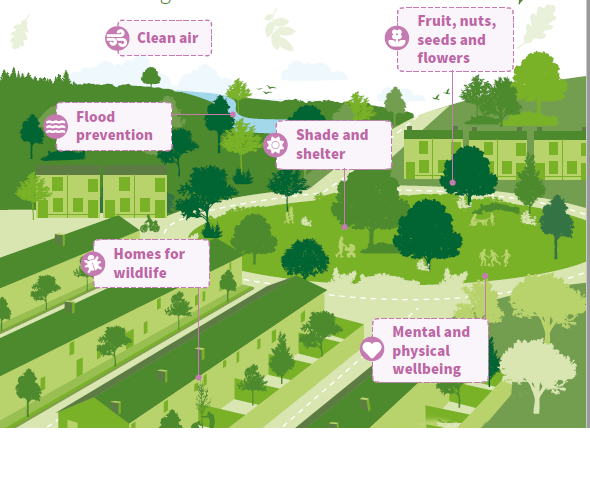 Urban trees can help us adapt to some of the worst impacts of climate change, they absorb carbon dioxide, improve air quality, reduce surface water flooding, provide wildlife habitat and support biodiversity. We instinctively know that trees and greenery are good for our wellbeing and this was especially evident during COVID 19 when people flocked to visit parks, woodlands and open spaces, but not everyone has equal access to these places which is one of many reasons why more urban trees are needed.
Urban trees can help us adapt to some of the worst impacts of climate change, they absorb carbon dioxide, improve air quality, reduce surface water flooding, provide wildlife habitat and support biodiversity. We instinctively know that trees and greenery are good for our wellbeing and this was especially evident during COVID 19 when people flocked to visit parks, woodlands and open spaces, but not everyone has equal access to these places which is one of many reasons why more urban trees are needed.
The recommended minimum urban canopy cover in towns and cities in the UK is 20%, and 15% in coastal locations but many areas in Cornwall fall well below these recommendations so we are prioritising areas with some of the lowest canopy cover.
Finding suitable places to plant is especially challenging in streets and built-up areas where conditions are tough for trees with a lot of hard surfaces, underground services and street signage. As well as targeting areas with low canopy cover, to enable us to gain momentum we are focusing planting in grass verges and amenity areas.
Can I get involved in planting and aftercare?
Yes, we would love you too! We are always keen for people to get involved with planting and aftercare which is essential for the trees to establish. If you would like to find out more, and ask about joining our Tree Wardens scheme, please let us know on our Contact Us form or emailing forestforcornwall@cornwall.gov.uk.
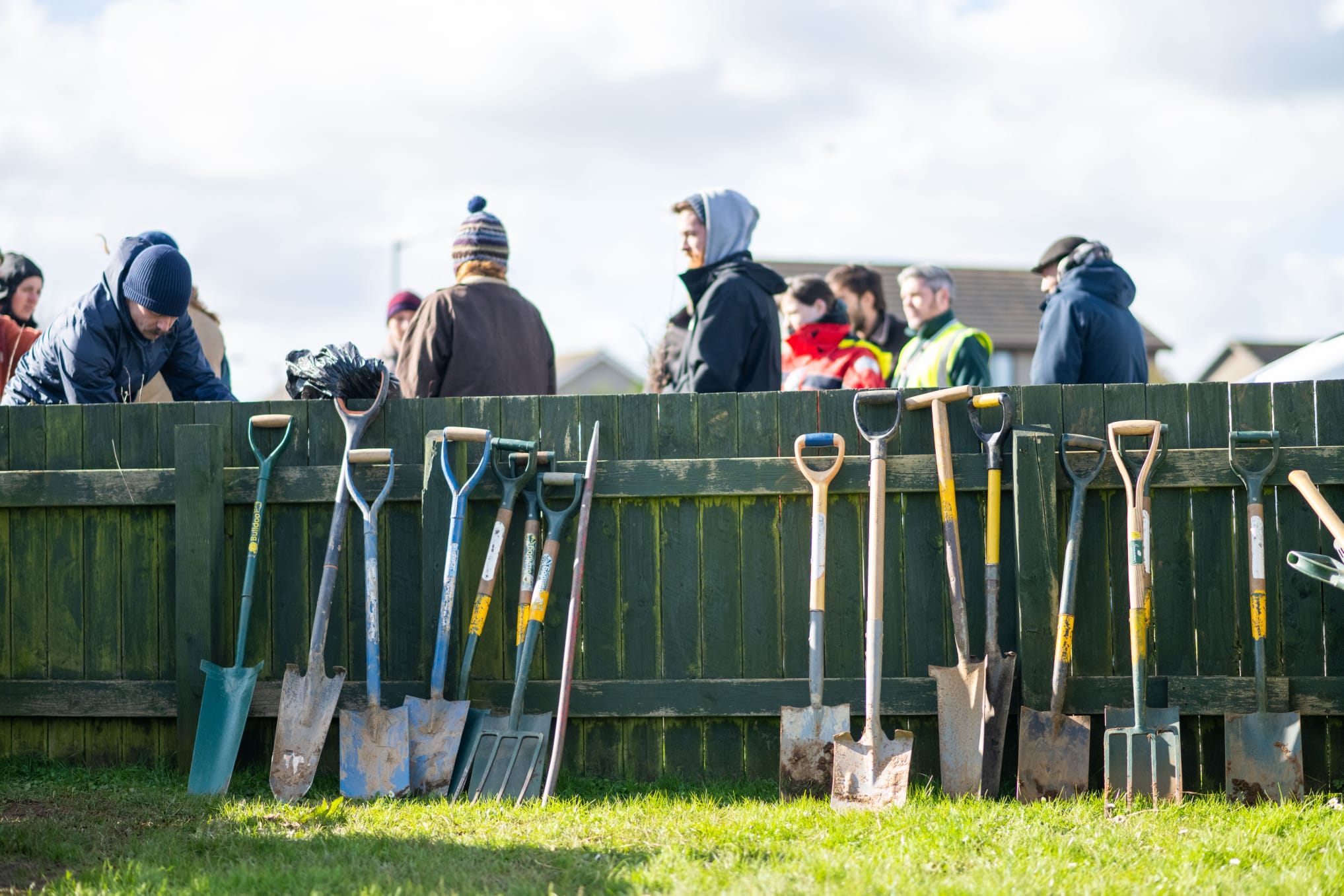
Volunteers gathering to help plant out at Carn Brea near Camborne
When will the trees be planted?
Trees are planted during dormancy which is generally from November to March. The aim is to complete all planting during this period starting in January 2026. Specific details about timings for each site will be available nearer the planting season and dates may change if weather conditions become unsuitable for planting.
How have these trees been selected?
A mix of species will be planted to provide variety in tree shape, blossom, fruit and colour, as well as building resilience to pests and disease. They have been carefully selected using our tree expertise, based on the Right Tree Right Place principle. The following are key considerations for tree selection:
Planting environment
Even though we see healthy mature trees in towns and cities, establishing them in an urban area is challenging because there is often compacted poor quality soil, underground pipes to avoid, and a lot of hard surfaces, making it hard for roots to get the air, water and nutrients they need. The local climate, exposure to wind, salt and drainage all have an impact on success.
Shape, form and attractiveness
We have selected cultivated varieties suited to urban environments and have only selected small or medium size canopy trees with narrow canopy shapes to reduce overhanging branches, shading and obstruction of views. Leaf shape/attractiveness and size, fruit, flowering / colours and potential for future root disturbance of footways have all been considered.
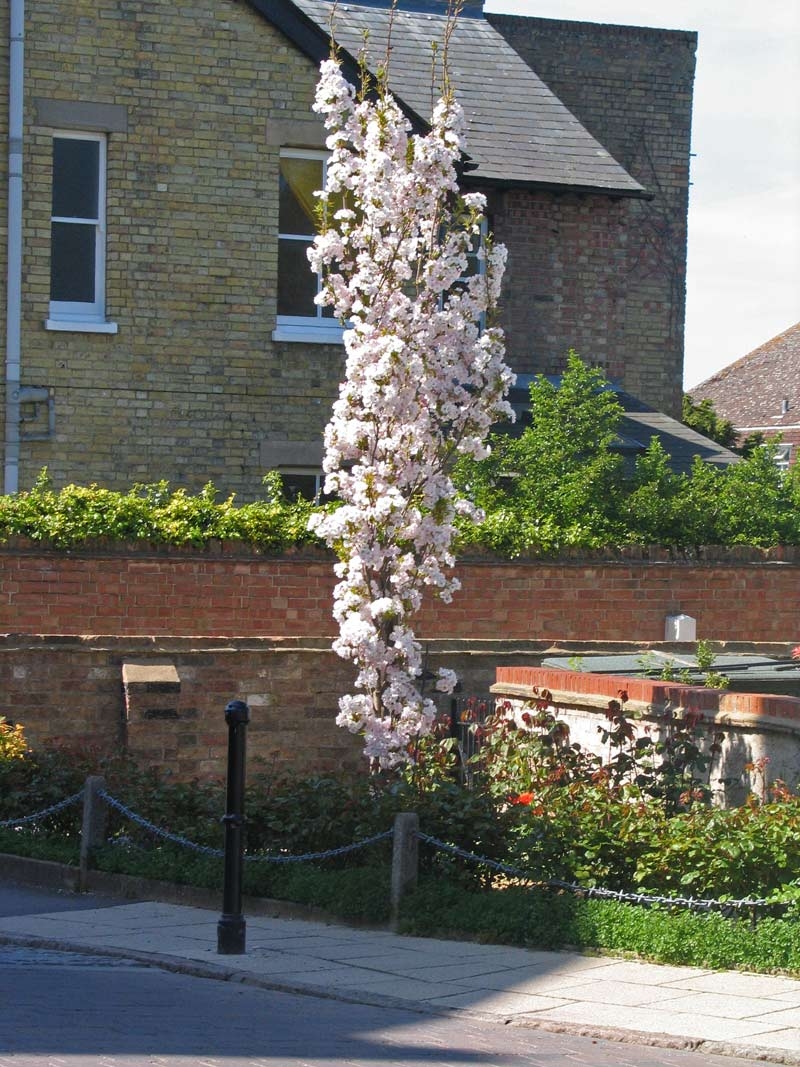 Prunus amanogowa has a narrow upright shape with stunning white flowers | 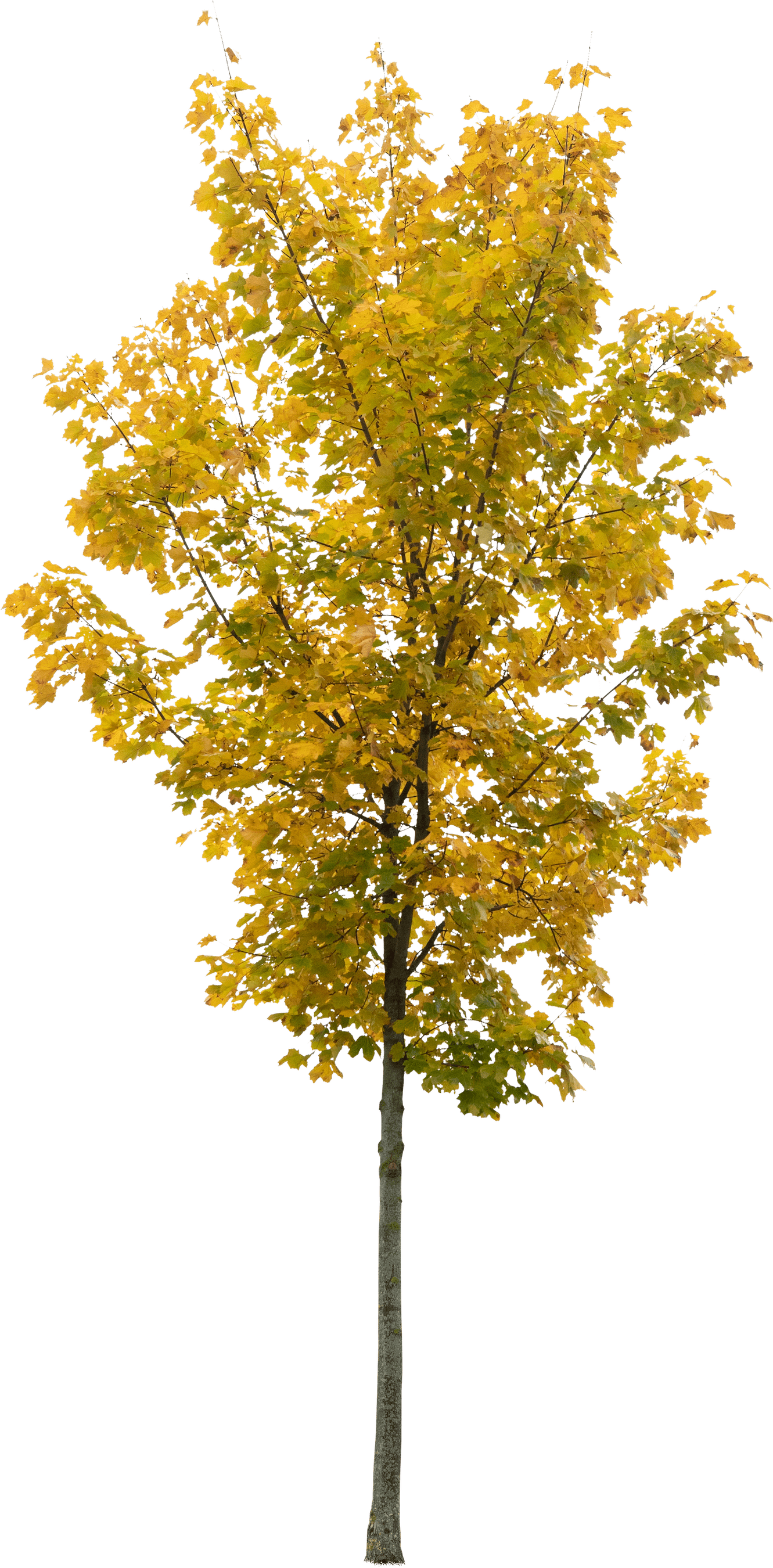 Acers have striking autumn colours | 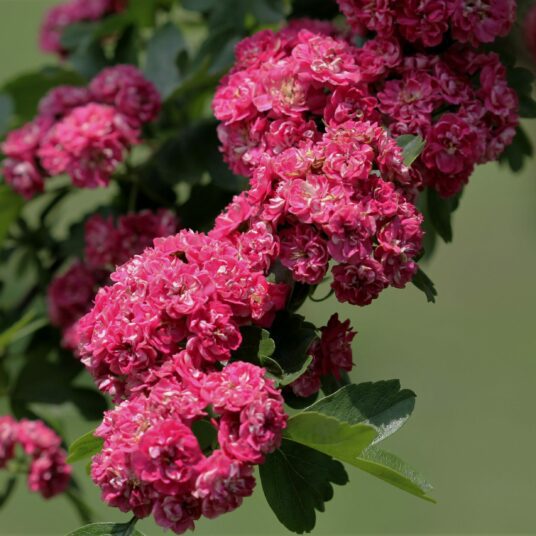 Vibrant 'Paul's scarlet' hawthorn flowers attract pollinators Vibrant 'Paul's scarlet' hawthorn flowers attract pollinators |
In parks or wider open spaces, we have selected trees with the potential to grow large canopies because they will deliver the greatest long-term benefits to people and wildlife.
Biodiversity and long-term resilience
Devastation caused by Ash dieback disease and Dutch elm disease have taught us that it is important to create long term resistance against pests and diseases. This means planting a broad selection of tree species (biodiversity) and avoiding planting a small selection of the same trees everywhere which makes the wider tree population more vulnerable to pest and disease attack.
Please note that Urban tree planting is challenging and there are some things that may change the position or number of trees that can be planted. This will mainly be due to the location of underground services which are not always clear until a hole has been excavated.


